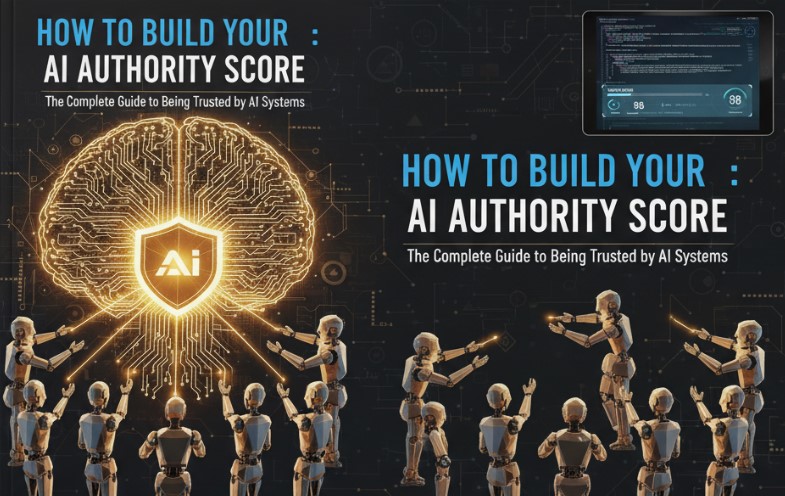Published by NewsPR Today | June 2025
It feels like we’ve only just got into the swing of this year, but 2025 is already looming on the horizon. If you’re a business owner, marketer, or analyst, you know that the plans you make in the next few months will define your success for the year ahead.
But strategic planning isn’t about dusting off last year’s PowerPoint and changing the dates. It’s about asking the hard, uncomfortable, and genuinely important questions. It’s about getting real about what’s working, what’s not, and where the next big opportunities—and threats—are coming from.
So, grab a coffee. Let’s talk through the ten strategic questions you and your team should be tackling right now to build a resilient and ambitious plan for 2025.
1. How is AI truly improving our customer experience or efficiency?
The AI hype train is running at full speed, but it’s time to get off at the ‘practical application’ station. The question for 2025 isn’t if you’re using AI but how it’s creating tangible value. Are you just dabbling with a generic chatbot, or are you using AI to:
- Predict customer churn based on behaviour patterns?
- Personalise email campaigns at a scale no human team could manage?
- Optimise your supply chain by forecasting demand more accurately.
If the answer is fuzzy, your goal for 2025 is to move AI from a novelty to a core driver of either efficiency or customer delight.
2. What’s our post-cookie plan for building first-party data?
The slow death of the third-party cookie isn’t news, but a surprising number of businesses are still dragging their feet. Relying on paid media platforms for targeting is becoming a riskier and more expensive game.
You need a robust strategy for collecting and using your data. This could mean:
- Developing genuinely useful gated content (e-books, webinars, tools).
- Creating a loyalty programme that customers want to join.
- Using interactive quizzes or surveys that provide value in exchange for information.
Your first-party data is a strategic asset that you own and control. What are you doing to build it?
3. Is our brand promise reflected in our actual customer journey?
Your marketing team might be crafting beautiful messages about being “customer-centric” and “seamless”, but is that what people experience?
Map it out. Go through the process of becoming a customer yourself. How easy is it to find information? What’s the checkout or sign-up process like? What happens when something goes wrong and you need support? Often, there’s a huge gap between the brand we advertise and the experience we deliver. Closing that gap is one of the biggest competitive advantages you can create.
4. If we were a new customer, why would we choose you?
“We have great service” or “a quality product” are not good enough answers anymore. Your competitors are saying the same thing. You need to be brutally honest here.
What is your unique, defensible differentiator?
- Is it your proprietary technology?
- Your unforgettable branding and community?
- A business model that radically undercuts the market?
- A level of specialist expertise that no one else has?
If you can’t articulate this in a single, compelling sentence, it’s time for a deep dive into your market position.
A Word of Caution: The Strategic Planning Trap
The biggest mistake we see? Leaders spend weeks creating a beautiful strategy document that ends up gathering dust in a shared drive. A strategy isn’t a document; it’s a set of choices and priorities that guide daily actions.
How to avoid it: Make it simple. Focus on 3-5 core strategic priorities for the year. Assign clear ownership for each. And most importantly, communicate it relentlessly so that every single person in the organisation understands how their work contributes to the plan.
5. Which low-value tasks are stealing time from our most talented people?
Your best people—your creative marketers, sharp analysts, and expert strategists—should be focused on high-impact work. Yet, how much of their week is eaten up by manual reporting, repetitive admin, or wrestling with clunky software?
Identifying these time-sinks is the first step. The second is to ruthlessly automate, delegate, or eliminate them. This isn’t about cutting costs; it’s about reallocating your most valuable resource (human brainpower) to the problems that grow the business.
6. Where are the critical skills gaps in our team for the next three years?
The skills that got you here won’t necessarily get you to where you need to be. The rapid evolution of data science, AI prompting, and privacy-first marketing means you constantly need to be looking ahead.
Analyse your team’s current capabilities against your 2025 goals. Where are the holes?
- Do you have enough data literacy across the marketing team?
- Is anyone skilled in marketing automation and CRM management?
- Do you have in-house talent that understands how to leverage generative AI for content and creativity?
- Decide now whether you’re going to hire for those skills, train your existing team, or partner with freelancers and agencies.
7. Are we just talking about our values, or are we living them?
Today’s customers and employees have a low tolerance for hypocrisy. If your website champions sustainability but your operations are wasteful, people will notice. If you talk about work-life balance while your team is burning out, your best talent will leave.
Authenticity is a strategy. Look at your core values and ask where they show up in your:
- Hiring processes
- Choice of suppliers
- Product development
- Marketing messages
In 2025, brands that live their values won’t just feel good; they’ll perform better.
8. How resilient is our revenue model to market shocks?
The last few years have taught us that stability is an illusion. Is your business overly reliant on a single product, a single marketing channel, or a handful of large clients?
Building resilience means diversifying. This could involve:
- Exploring new revenue streams (e.g., subscriptions, services, training).
- Expanding into different customer segments or geographic markets.
- Ensuring your marketing mix is balanced and not dependent on one platform’s algorithm.
- Think like an investor and hedge your bets.
9. Which marketing channel should we fire in 2025?
This one is deliberately provocative. It’s easy to keep adding new channels to the mix, but it’s much harder to kill the ones that are no longer pulling their weight. Every channel requires resources—time, money, and focus.
Analyse your channels not just on last-click attribution but on their real contribution to the customer journey and their cost-to-serve. Is that legacy social media account with flat engagement worth the effort? Could the budget from those underperforming display ads be better used elsewhere? Be brave and make the tough call.
10. What’s our ‘permission to fail’ budget for innovation?
If you’re not failing, you’re not trying enough new things. But innovation can’t just be a buzzword; it needs to be resourced. A ‘permission to fail’ budget is a small, dedicated pot of money and time set aside for experimentation.
It allows your team to test new ideas, channels, and technologies without the pressure of having to guarantee an immediate return. Most experiments will fail, and that’s okay. The one or two that succeed could become your biggest growth drivers in 2026 and beyond.
Start the Conversation Today
You won’t have the answers to all these questions overnight. That’s the point. Their value lies in starting the right conversations with your team and leadership.
Use them to challenge old assumptions and force a clear-eyed view of the future. By moving beyond day-to-day tactics and wrestling with these strategic issues now, you’ll be building an organisation that doesn’t just react to the future but actively shapes it.




